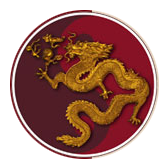
When most people hear the term “acupuncture” they think of needles being inserted into the skin. The term dry needling is often brought up for people suffering from pain as well and it also includes needles being inserted into the skin. But for the most part, that’s where the similarities end. Everything from their origins and benefits to how many needles and how long a session might take is different. Let’s take a deep dive into both.
Dry Needling
Dry needling is a relatively recent development in the field of physical therapy. This technique involves inserting thin, filiform needles into myofascial trigger points — commonly known as “knots”— to alleviate pain and improve muscle function. Unlike acupuncture, which has roots in ancient Chinese medicine, dry needling is based on Western anatomical and neurophysiological principles.
Dry needling has gained traction in the medical community for its effectiveness in treating musculoskeletal pain. A systematic review published in the Journal of Orthopaedic & Sports Physical Therapy in 2013 found that dry needling can significantly reduce pain and improve function in patients with myofascial pain syndrome. Additionally, a 2017 study in the Journal of Manual & Manipulative Therapy reported that 85% of patients experienced pain relief after just one session of dry needling.
Acupuncture: An Ancient Healing Art
Acupuncture, on the other hand, is a cornerstone of Traditional Chinese Medicine (TCM). Practiced for more than 2,500 years, it involves inserting needles into specific points on the body, known as acupoints, to balance the body’s energy, or qi. According to TCM, illness and pain result from imbalances in qi, and acupuncture aims to restore harmony within the body.
Acupuncture has been extensively studied and is recognized by the World Health Organization (WHO) as an effective treatment for a wide range of conditions, from chronic pain to anxiety. A meta-analysis published in JAMA Internal Medicine in 2012 concluded that acupuncture is more effective than no treatment or usual care for chronic pain, with approximately 50% of patients reporting significant pain relief. A 2018 study in the Journal of Pain found that acupuncture can reduce the intensity of chronic pain by up to 30%.
Key Differences: Philosophy, Technique, and Training
While both dry needling and acupuncture involve the insertion of needles into the body, their underlying philosophies, techniques, and practitioner training differ significantly. Here’s a highlight of some of the biggest differences.
Dry Needling: Focuses on targeting specific trigger points within muscles. It is grounded in Western medical theories and aims to release tension, improve blood flow, and reduce pain.
Acupuncture: Centers around the concept of qi and energy pathways, or meridians. It seeks to balance the body’s energy and address various health issues holistically.
Dry Needling: Needles are inserted directly into trigger points to elicit a twitch response, which is believed to reset the muscle and alleviate pain.
Acupuncture: Needles are placed along meridians and may be manipulated gently or stimulated with electrical impulses to enhance the therapeutic effect.
Dry Needling: Practitioners are typically physical therapists with additional training in dry needling techniques. Certification requirements vary by region.
Acupuncture: Practitioners undergo extensive training in TCM and acupuncture, often requiring years of study and clinical practice. In many countries, acupuncturists must be licensed or certified by a regulatory body.
It’s important to understand the differences between dry needling and acupuncture. While both techniques offer unique benefits, the choice between them often depends on personal preferences, specific health needs, and the underlying philosophy one resonates with.
As you consider your options for pain relief and overall wellness, ask yourself: What approach aligns best with your beliefs and health goals? Whether you choose the precise, trigger-point focus of dry needling or the holistic, energy-balancing method of acupuncture, the path to healing is a personal journey worth exploring.


